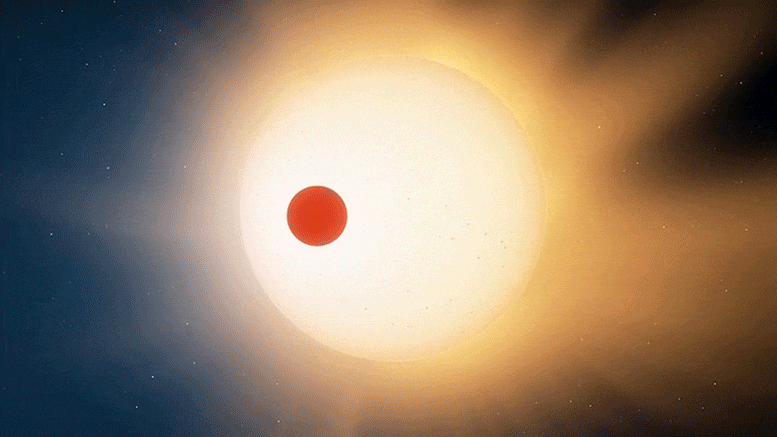
The findings concerning the recently found planet LTT 9779b were published today in Astrophysical Journal Letters.
The paper details the very first spectral atmospheric characterization of any planet discovered by TESS, the first global temperature map of any TESS planet with an atmosphere and a hot Neptune whose emission spectrum is fundamentally different from the many larger “hot Jupiters” previously studied.
“For the first time, we measured the light coming from this planet that shouldn’t exist,” said Ian Crossfield, assistant professor of physics & astronomy at KU and lead author of the paper.
“This planet is so intensely irradiated by its star that its temperature is over 3,000 degrees Fahrenheit and its atmosphere could have evaporated entirely.
Yet, our Spitzer observations show us its atmosphere via the infrared light the planet emits.”.
“For the first time, we measured the light coming from this planet that shouldn’t exist,” said Ian Crossfield, assistant professor of physics & astronomy at KU and lead author of the paper.
“This planet is so intensely irradiated by its star that its temperature is over 3,000 degrees Fahrenheit and its atmosphere could have evaporated entirely.
Yet, our Spitzer observations show us its atmosphere via the infrared light the planet emits.” Credit: Ethen Schmidt, University of Kansas.
“This planet doesn’t have a solid surface, and it’s much hotter even than Mercury in our solar system — not only would lead melt in the atmosphere of this planet, but so would platinum, chromium, and stainless steel,” Crossfield said.
“A year on this planet is less than 24 hours — that’s how quickly it’s whipping around its star.
Hot Neptune LTT 9779b was discovered just last year, becoming one of the first Neptune-sized planets discovered by NASA’s all-sky TESS planet-hunting mission.
“We measure how much infrared light was being emitted by the planet as it rotates 360 degrees on its axis,” he said.
“Infrared light tells you the temperature of something and where the hotter and cooler parts of this planet are — on Earth, it’s not hottest at noon; it’s hottest a couple of hours into the afternoon.
We see most of the infrared light coming from the part of the planet when its star is straight overhead and a lot less from other parts of the planet.”.
This transit briefly blocks an appreciable fraction of the star’s light, and is how the planet was first discovered by NASA’s TESS mission.
What our measurements so far show us are what we call the spectral absorption features — and its spectrum indicates carbon monoxide and or carbon dioxide in the atmosphere?
Although LTT 9779b isn’t suitable for colonization by human beings or any other known life form, Crossfield said evaluating its atmosphere would hone techniques that someday could be used to find more welcoming planets for life.
Crossfield said his peek into the atmosphere of such a strange and distant planet also was valuable on its own merits.
Crossfield said much work is left to do in order to better understand LTT 9779b and similar hot Neptunes not yet discovered.
“How is this planet able to retain its atmosphere
“Both findings make LTT 9779b say that there is a very strong signal to be observed making the planet a very intriguing target for future detailed characterization with JWST